
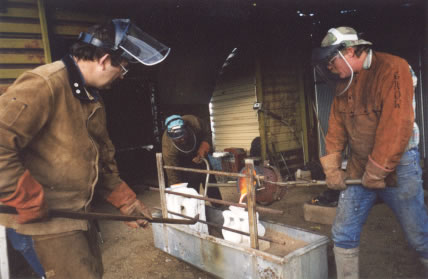
Tim
Nimmo of Crow Atelier pouring molton bronze for Sumichrast's "Swimmer".

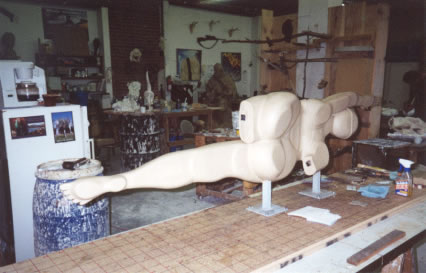
Working
clay sculpture of, "Swimmer", Loveland, Colorado.
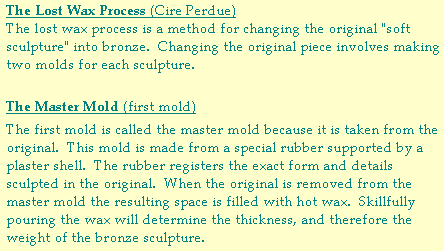
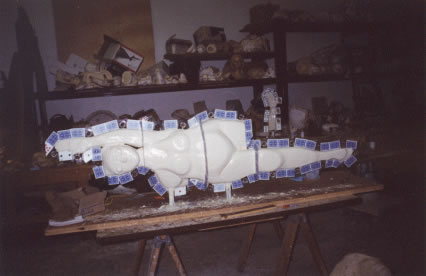
Rubber
coating covering the clay sculpture. Cards are added to create a seam
for the mold.
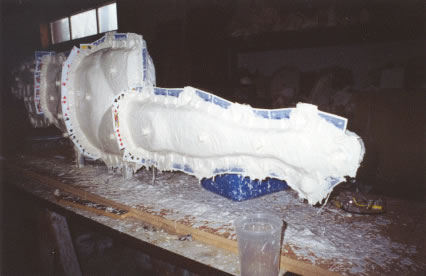
Plaster
is applied over the rubber coating for support and tabs lock the rubber
in place.

The
rubber liner is peeled away from the clay, which will be replaced
with wax.



The
cast bronze is being refined in preparation for the patina.
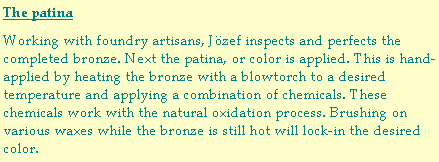

"Meg",
of Bedford & Coulter Studios heats the sculpture as the patina
is applied.
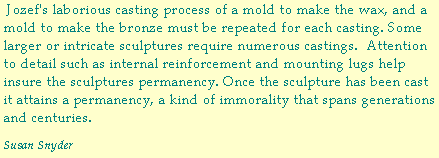
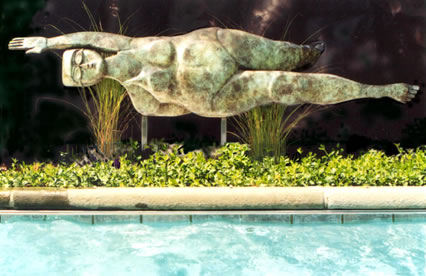
"Swimmer"
2001© Jözef Sumichrast private collection Lake Forest, Illinois
back